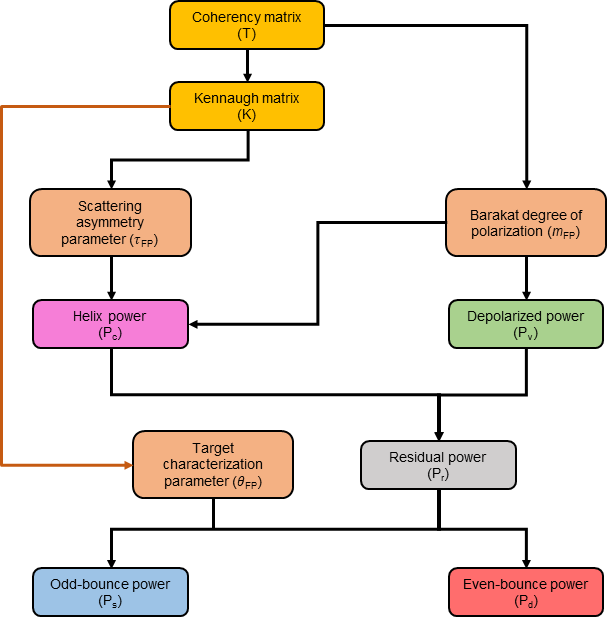Target decomposition methods of polarimetric Synthetic Aperture Radar (PolSAR) data explain scattering information from a target. In MF4CF, the non-conventional 3D Barakat degree of polarization is used to obtain the scattered electromagnetic wave's polarization state. The 3D Barakat degree of polarization is used to obtain the even-bounce, odd-bounce, and diffused scattering power components. Along with this, a measure of target scattering asymmetry is calculated, which is then suitably utilized to obtain the helicity power. All the power components are roll-invariant, non-negative and unambiguous.
An unsupervised clustering of different scattering mechanisms is provided in clustering_four_component.m. The physical relation of different clusters with scattering power components are shown here:
This is a MATLAB based code. Users will have to select T3 matrix in PolSARpro format. The default window size is set to 7, which is defined under variable wsi. Please change this window size as per your requirement.
- Please use
MF4C.mto compute the target characterization parameters and four scattering power components.clustering_four_component.mto perform unsupervised clustering.
- An
Rcode is also provided:MF4C.R. In this code also, the default window size is 7. Please change the window size in the variablewsi. - A
Ccode is provided:MF4CF.c. Analysis window size is set as a command-line argument.
Dey, Subhadip; Bhattacharya, Avik; Frery, Alejandro C.; López-Martínez, Carlos (2020): A Model-free Four Component Scattering Power Decomposition for Polarimetric SAR Data. TechRxiv. Preprint. https://doi.org/10.36227/techrxiv.13298033.v1


